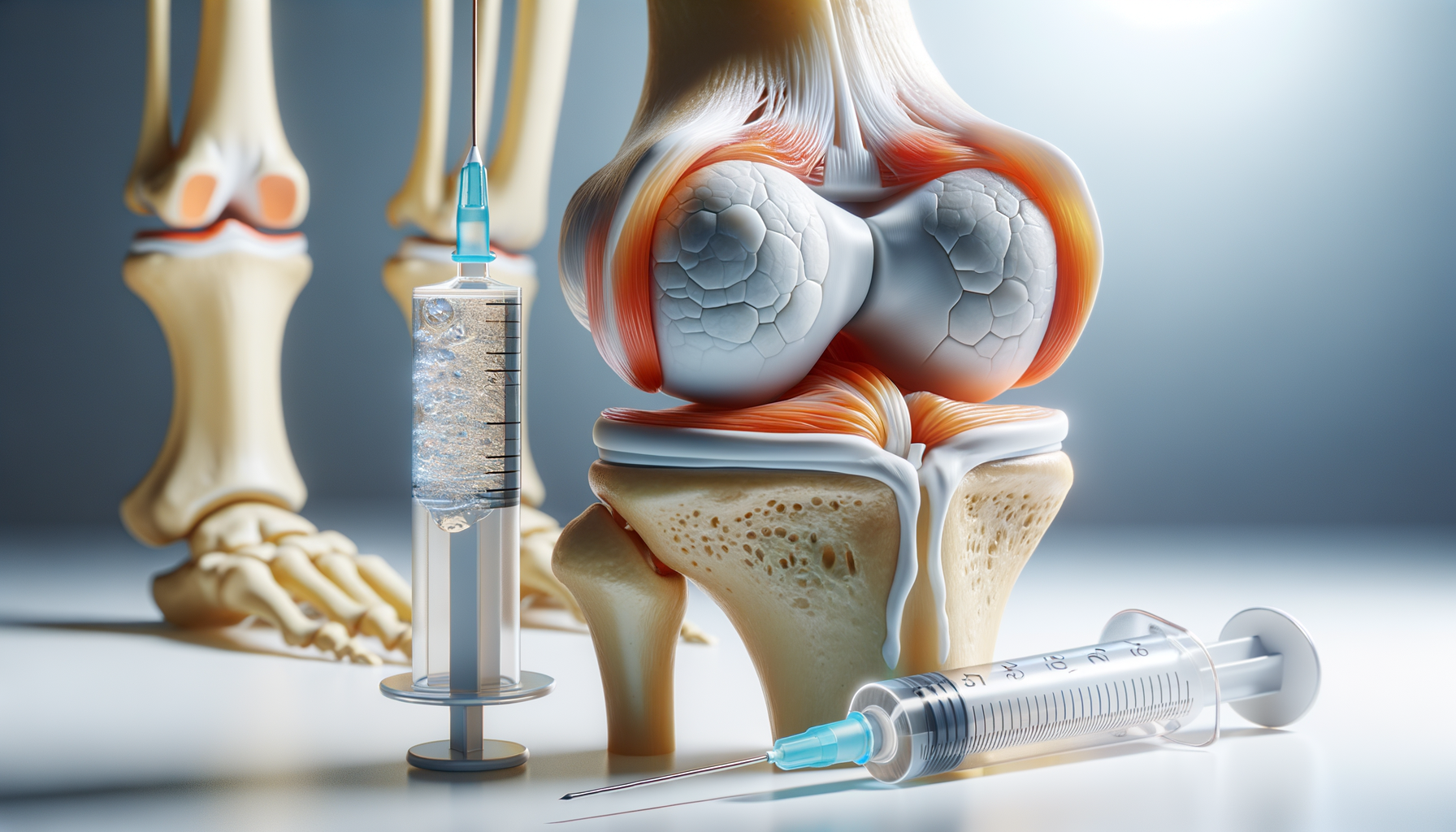Introduction to Knee Gel Injections
Knee pain, often resulting from osteoarthritis, can be debilitating, affecting mobility and quality of life. Among the various treatment options available, knee gel injections have emerged as a noteworthy solution. These injections, also known as viscosupplementation, involve injecting hyaluronic acid into the knee joint to supplement the naturally occurring synovial fluid. This procedure aims to reduce pain and improve joint function, offering a non-surgical alternative for those struggling with knee discomfort.
The relevance of knee gel injections is underscored by their increasing popularity among patients seeking relief from chronic knee pain. As a minimally invasive procedure, it provides an option for individuals who may not be ready or eligible for surgical interventions. Understanding the mechanism, benefits, and considerations of knee gel injections is crucial for anyone considering this treatment.
How Knee Gel Injections Work
The primary component of knee gel injections is hyaluronic acid, a substance naturally found in the synovial fluid of joints. It serves as a lubricant and shock absorber, facilitating smooth movement and reducing friction. In osteoarthritis, the concentration and quality of hyaluronic acid in the knee joint diminish, contributing to increased pain and stiffness.
Knee gel injections aim to restore the lost lubrication and improve the viscoelastic properties of the joint fluid. By injecting hyaluronic acid directly into the knee, the treatment can help reduce inflammation, alleviate pain, and enhance mobility. The procedure is typically performed in a clinical setting and involves a series of injections over several weeks, depending on the specific product used and the patient’s condition.
- Improved joint lubrication
- Reduction in pain and inflammation
- Enhanced mobility and quality of life
It’s important to note that while knee gel injections can provide significant relief, they may not be suitable for everyone. Consulting with a healthcare professional is essential to determine the best course of action based on individual health needs and conditions.
Benefits and Effectiveness of Knee Gel Injections
One of the key advantages of knee gel injections is their potential to provide relief without the need for surgery. For individuals with mild to moderate osteoarthritis, these injections can offer a significant reduction in pain and improvement in joint function. Studies have shown that patients often experience relief lasting several months, making it a viable option for long-term management of knee osteoarthritis.
The effectiveness of knee gel injections can vary based on several factors, including the severity of the condition and the specific type of hyaluronic acid used. Some patients report noticeable improvements within weeks, while others may require a longer period to experience full benefits. Additionally, the procedure is generally well-tolerated, with minimal side effects such as temporary pain or swelling at the injection site.
For those seeking alternatives to medication or surgery, knee gel injections present a promising option. They can be particularly beneficial for individuals who have not found sufficient relief from other treatments, such as physical therapy or oral pain relievers.
Considerations and Potential Risks
While knee gel injections offer numerous benefits, it’s important to be aware of potential risks and considerations. As with any medical procedure, there is a possibility of adverse reactions, though these are typically mild and temporary. Common side effects include pain, swelling, and redness at the injection site, which usually resolve within a few days.
Patients with allergies to hyaluronic acid or a history of severe allergic reactions should discuss these concerns with their healthcare provider before proceeding. Additionally, individuals with infections or skin diseases in the area of the injection may not be suitable candidates for this treatment.
It’s also crucial to have realistic expectations regarding the outcomes of knee gel injections. While many patients experience significant relief, the degree of improvement can vary. It’s essential to maintain open communication with a healthcare provider to ensure that the treatment aligns with personal health goals and expectations.
Conclusion: Is Knee Gel Injection Right for You?
Knee gel injections represent a valuable tool in the management of osteoarthritis-related knee pain. They offer a non-surgical option that can enhance mobility and improve quality of life for many patients. However, determining whether this treatment is appropriate requires careful consideration of individual health factors and consultation with a healthcare professional.
If you’re struggling with knee pain and seeking alternatives to medication or surgery, discussing knee gel injections with your doctor could be a worthwhile step. By understanding the benefits, mechanisms, and potential risks, you can make an informed decision that best suits your health needs and lifestyle.








